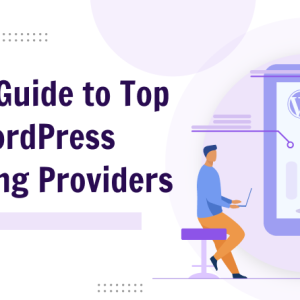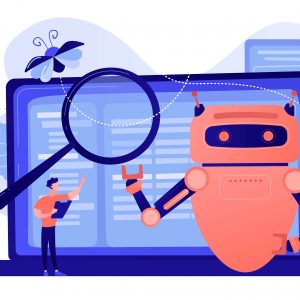Did you know that on an average every person has at least 40 apps installed on their mobile phones and uses 9 apps every day? Isn’t that cool? With smartphones becoming an even more integral part of our lives, we are always surrounded by apps and info on the go! We use these apps for streaming movies, listening to music, bank transactions, calculation, communication, and even for the simplest tasks.
With over 3.3 Million apps on Google Play Store and 2 Million apps on Apple Store, the competition in the app market is super high for developers. In the digital world, every second counts, and if your app is sluggish and not up to the mark, it can lead to a reduction of 7% conversion rate for even a delay of 1 second. Yep, it’s that critical & any credible mobile app development company in India will pay heed to this.
With the increase in usage and neck-wrenching competition, mobile app optimization has become more important than ever for businesses around the world—Improving the performance of the app covers different aspects of the app’s performance like improving responsiveness, speed, efficiency, and much more.
A well-optimized app not only improves user experience but becomes the root cause behind the success of any business. This is why, in this blog post, we will discuss some of the best practices for mobile developers for maximizing app performance while offering mobile app development services.
Table of Contents
Mobile App Performance Tips for App Developers
High-quality code maintenance
Coding is the base of any mobile app development and therefore, various aspects of coding should be kept in mind during the app development process. First of all, the developers should get rid of all the unused frameworks and always keep the code updated. Both extraneous and outdated code increases app launch time.
Additionally, it is best if the developers prioritize app operations and reduce heavy activity that can lead to bottlenecks. Get rid of all the blocking work from the main thread to background threads to be performed asynchronously.
Hire IOS app developers that can also monitor app energy consumption at different stages of operation, especially when the app is running in the background. All these can be fixed by maintaining the coding quality during the app development stage or after deployment.
Client-server optimization
During the development stage of a mobile app, the client-server API should be developed in such a way that the user doesn’t have to suffer because of unnecessary data. Both object and content should be divided based on purpose and request them when needed.
Also, during the API development, one should keep in mind that not all the users out there are equipped with 4G. Many of them use 3G and even more unstable internet connection. To deal with such an issue of connection, all the complicated requests should be divided into smaller stages and the app testing on poor networks should never be skipped.
Developers can also use a content delivery network to minimize data load time by narrowing down the bridge between the data source and the user.
Mobile App launch time
The app launch duration is the first interaction of the user with any mobile app in the world and instead of losing users because of this, developers should capitalize on it by reducing the app loading time. According to experts, if you want your app launch time to leave a good impression, the app should launch in at least 1.5 seconds.
To make it happen, developers should begin scouring their mobile app for any type of resource-intensive task that is mostly performed at the launch of the app. For example, outdated data is a resource-intensive task and it should be deleted to improve the app load time.
One of the best methods to give an impression to the user that your app is fast and responsive is to use splash screens. It is the screen that the users see as soon as they open the app. In case developers can’t improve the app launch time, better utilization of the splash screen will force users to think that the app is not frozen.
Split data in different phases
When an app has to deal with a huge amount of data at once, it puts enormous pressure on both the mobile phone’s memory and processing power. In such a situation, mobile app performance is compromised. The best tip to deal with this issue and improve mobile app performance is to divide the data into smaller chunks so that they can be easily unloaded as per the requirement.
The best methods used by a mobile app development company in India to divide data into smaller chunks are:
●Developers can use the ‘lazy loading’ technique. In this technique, only the important data is loaded when the application is launched.
●Pagination is another good method that can be used to break big parts in smaller chunks.
●Storing frequently accessed data on the device itself so that it can be quickly retrieved
Use of Background Fetching
Background fetching is another good tip that can be used by mobile app developers to improve performance. The use of background fetching allows the mobile app to periodically retrieve new data or perform tasks even when the app is not actively running. If such a type of functionality is bundled with the mobile app, it can make sure the user gets updated content without the need of manual app interaction.
Some important benefits that mobile app developers can harness with the help of background fetching are:
●Data synchronization: The incorporation of background fetching allows the app to synchronize data with the server in the background.
●Optimized network usage: Scheduling of background fetching during off-peak hours. This helps with network congestion.
●Improved User Experience: App users are always welcomed to the app with up-to-date data whenever they launch the app.
Never Skip Image Optimization
From a normal person’s perspective, the bigger the image in mobile apps, the better the experience it will offer. But it is meaningless to use an image larger than the mobile or tablet screen. With the help of graphic elements and image optimization, lags can be wiped out from the mobile app. It even helps in improving the content loading time.
Mobile app developers should always harness the power of image compression and resizing. In compression, the weight of the image is lowered without compromising the quality of the image. On the other hand, resizing deals with changing the size of the image to make it fit like a glove in the app.
However, mobile developers should never choose images with smaller sizes, they should keep an even kneel between optimization and image size. If an image is shown in different sizes in the app, choosing a bigger image is always a better approach.
Bring native codes into action
Native codes are a blessing for developers when it comes to launching an app that performs seamlessly. Native codes are designed for a specific platform and this means it harnesses the power of the chosen platform’s software and hardware resources. Meanwhile, cross-platform solutions must be compatible with multiple platforms and this can result in mobile apps with below-average quality.
All the native codes are compiled straight in the machine while on the other side, cross-platform solutions are dependent upon an interpreter or a virtual machine. This can slow down the process and it even adds overhead.
Additionally, native codes have the capability of accessing low-level APIs, this allows direct and more effective communication with the platform.
Database Query Optimization
When the database query is optimized, it allows the app to easily retrieve and display the necessary information. The database is queried, it needs multiple resources like memory, processing power, and bandwidth. When the database query is optimized, mobile app developers make sure that the app uses only the important details and it does so seamlessly.
Such type of optimization leads to quicker response and smoother animations. Additionally, mobile app developers should also use methods like reducing data transfer, keeping complex or nested queries at bay, and indexing. This will also smoothen the function of the app.
Developers should also use tools like performance monitoring, and query analyzer to fine-tune all the queries and find bottlenecks in the app’s database.
Network Optimization
Mobile app developers should always prioritize network optimization as this leads to reduced latency, better data transmission, improved performance, smooth connectivity, enhanced communication, and seamless operations.
To optimize the network, developers should first try to load textual data. After textual data is loaded, the image-based data should load. Another standard method of network optimization is compressing the data using methods like Gzip. This brings down the overall size of the transferred data.
Also, developers should stay away from blocking UI threads with network requests by performing them asynchronously. This can be done by using different asynchronous frameworks like AsynchTask, Coroutines, and many more.
Conclusion
For a mobile app to rank at the top of the Google Play charts or the Apple Store charts it should perform flawlessly. Only then a mobile app will be loved by the users and the users will stick to it. Hire android app developers or hire ios app developers who are ready to use the available tools and the tips mentioned in this blog post to make your app perform better — that’s the only way to gain a competitive edge in the market.





